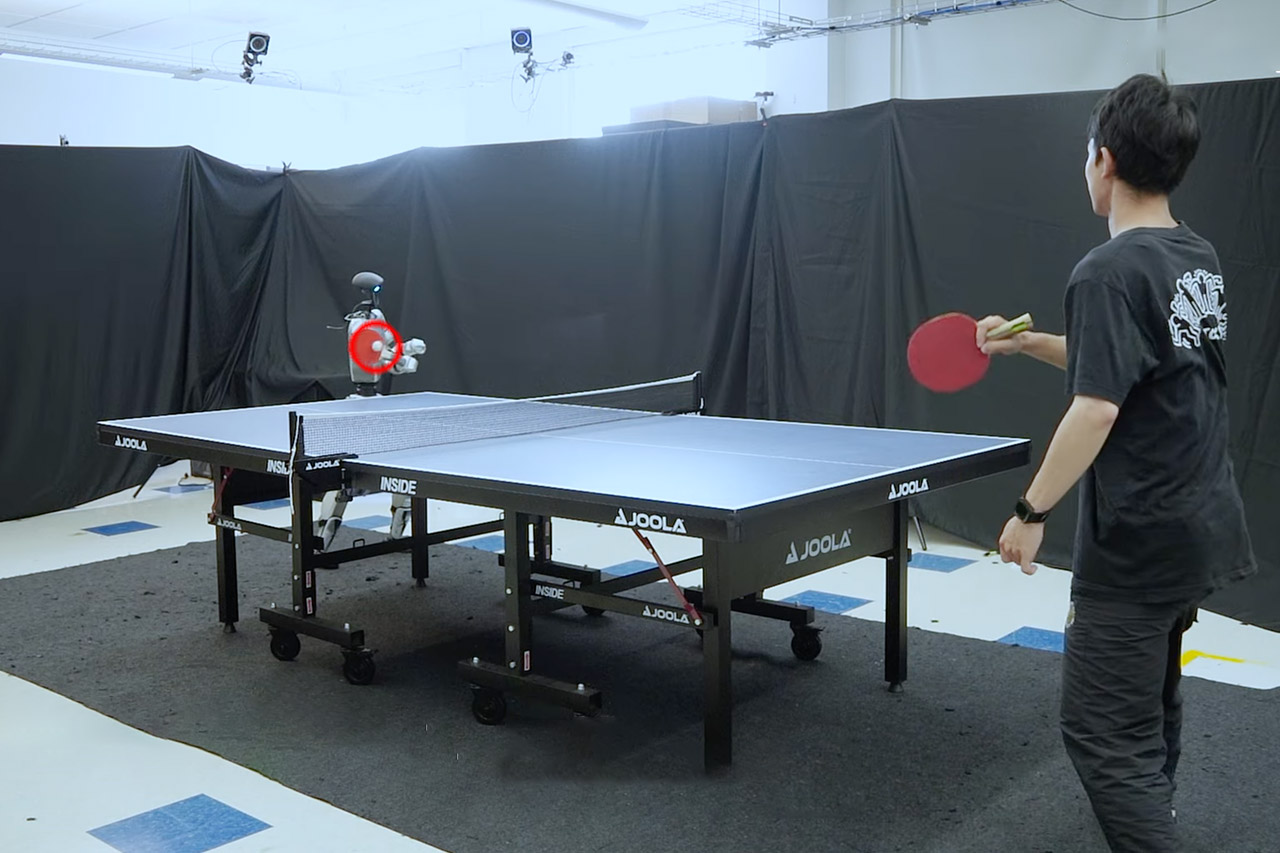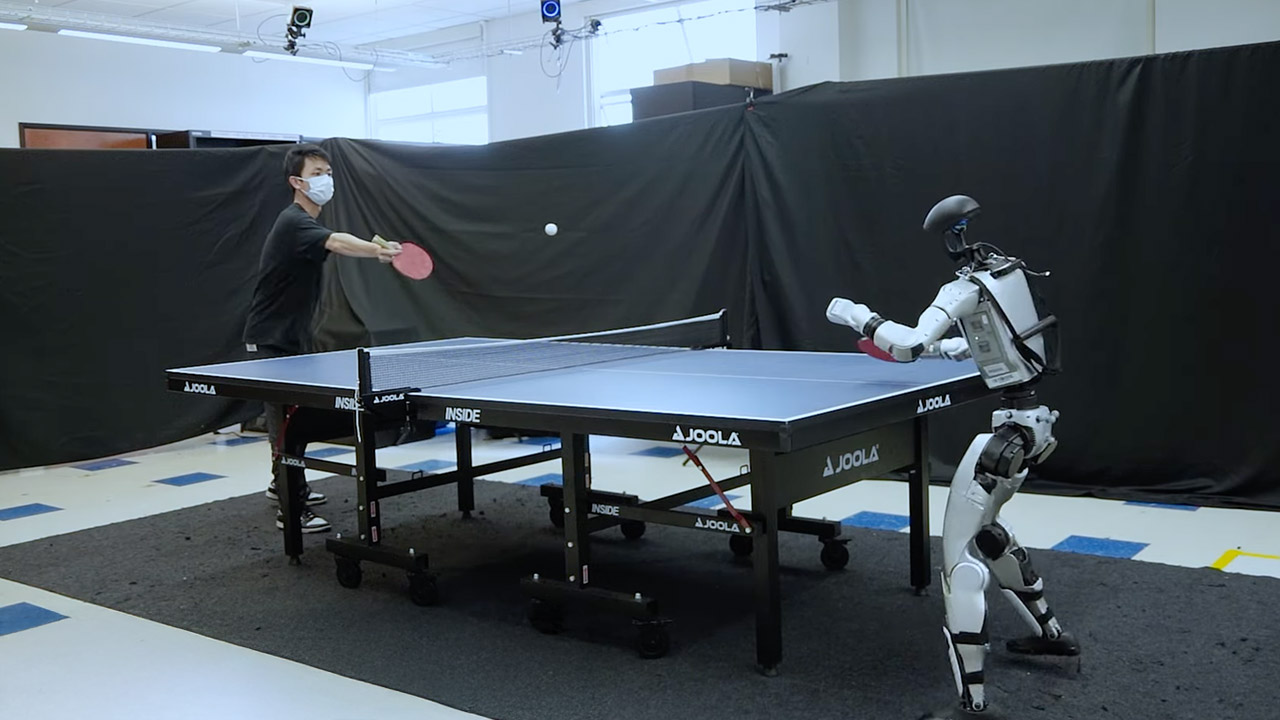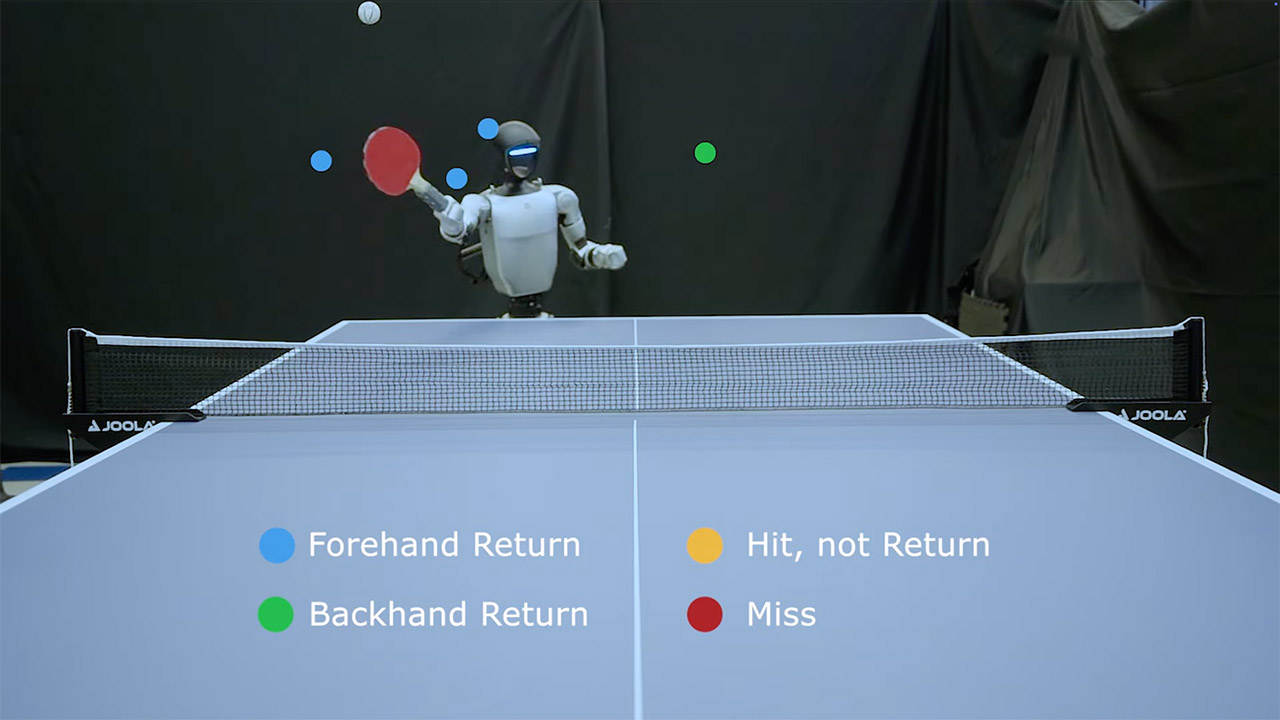
A humanoid robot steps up to a table tennis table, paddle in hand, and whacks a forehand that sends the ball flying across the net. This is UC Berkeley’s latest creation, the HumanoId Table TEnnis Robot, or HiTTER. This thing can play over 100 shots against a human and is precise, agile and a little bit human-like.
HiTTER’s success is based on a two-part system that simulates how humans play table tennis. A high-level planner is the brain, tracking the ball with external cameras and forecasting where it will land. This planner determines the exact location, speed and timing to hit the ball. A low-level controller is the body, taking those calculations and turning them into smooth movements of the robot’s arms and legs. The controller has been trained on human motion data so HiTTER moves naturally, side to side, turning and swinging in ways that are eerily similar. This allows the robot to react in under a second, which is critical when the balls are flying across the table at 5 meters per second.

JOOLA Inside Professional MDF Indoor Ping Pong Table with Quick Clamp Table Tennis Net and Post Set – 10…
- JOOLA – AN OLYMPIC TABLE TENNIS BRAND TRUSTED FOR 60+ YEARS: Launched in the 1950s, JOOLA has been the proud sponsor of the biggest tournaments in the…
- 15mm MDF SURFACE TOURNAMENT QUALITY AT HOME: The JOOLA Inside Table Tennis Table is a competition grade, regulation size indoor ping pong table,…
- EASY AND QUICK ASSEMBLY: Set up this top-performing table tennis table in approximately 10 minutes out of the box. The tournament-grade regulation…
Training a robot to play table tennis is hard because the game requires quick decisions, precise hand-eye coordination and the ability to adapt to an opponent’s unpredictable shots. Berkeley’s team solved this by combining two approaches. First they used a model-based planner to plot the ball’s trajectory and determine the best way to hit it. Second they used reinforcement learning, a method where the robot learns by trial and error, to fine tune its movements. HiTTER learned to mimic human players’ swings and footwork so its moves are not only successful but also shockingly lifelike. What was the result? A robot that can play 106 shots in a row with a human and even play another humanoid robot.

HiTTER’s success is because of its real-world performance, tested on a general-purpose humanoid robot, likely the Unitree G1. According to reports, it handled the chaos of a live match. Against human opponents, HiTTER held rallies that would exhaust most casual players, showing it could track, move and attack with precision. It also played against another humanoid and had consistent exchanges showing its versatility. These are not just bragging rights, it’s a robot that can do tasks that require quick thinking and physical dexterity in uncertain environments.

Beyond the table, HiTTER’s framework has far reaching implications. Table tennis is the perfect testing ground because it requires speed and precision in a dynamic environment. The same concepts that allowed HiTTER to return a topspin serve may one day help robots navigate busy warehouses, assist in homes or even perform delicate surgical procedures. Berkeley’s hierarchical approach which breaks down planning and movement into independent but connected systems provides a blueprint for robots to interact with the world like humans do. By training on human motions, the team ensures these devices move in intuitive ways, making them easier to live with.